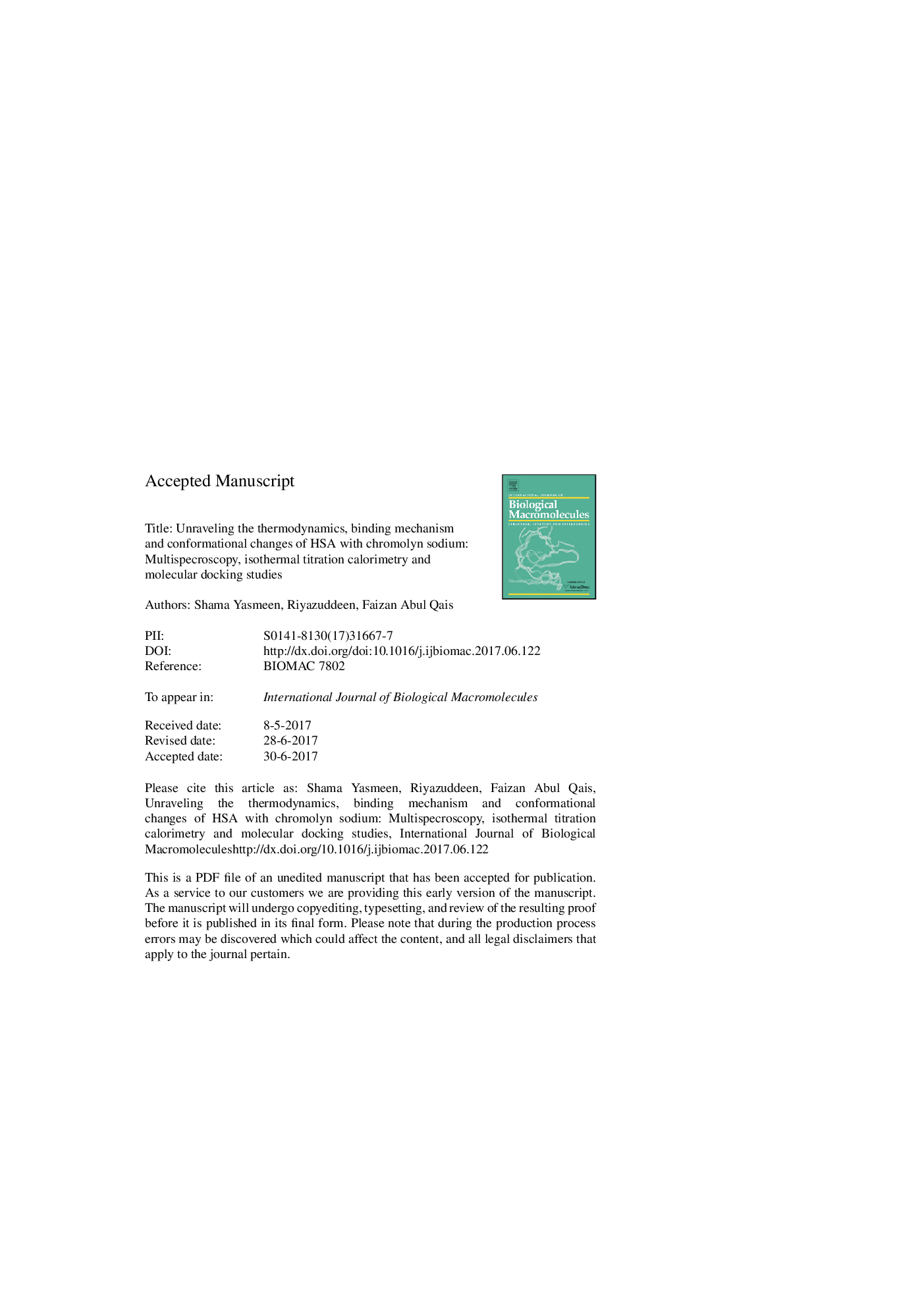| Article ID | Journal | Published Year | Pages | File Type |
|---|---|---|---|---|
| 8329313 | International Journal of Biological Macromolecules | 2017 | 35 Pages |
Abstract
Cromolyn sodium is an anti-allergic drug effective for treatment in asthma and allergic rhinitis. In this project, interaction of chromolyn sodium (CS) with human serum albumin (HSA) has been investigated by various techniques such as UV-vis, fluorescence, circular dichorism (CD), fourier transform infrared (FT-IR) spectroscopy, isothermal titration calorimetric (ITC) and molecular docking. The fluorescence quenching results revealed that there was static quenching mechanism in the interactions of CS with HSA. The binding constant (Kb), enthalpy change (ÎH°), entropy change (ÎS°) and Gibbs free energy change (ÎG°) were calculated. The negative values of TÎS° and ÎH° obtained from fluorescence spectroscopy and isothermal titration calorimetry, indicate that hydrogen bonding and van der Waal's forces played major role in the binding process and the reaction is exothermic in nature. The binding constant (Kb) was found to be in the order of 104 Mâ1 which depicts a good binding affinity of CS towards HSA. The conformational changes in the HSA due to interaction of CS were investigated from CD and FT-IR spectroscopy. The binding site of CS in HSA was sub-domain IIA as evident from site probing experiment and molecular docking studies.
Related Topics
Life Sciences
Biochemistry, Genetics and Molecular Biology
Biochemistry
Authors
Shama Yasmeen, Riyazuddeen Riyazuddeen, Faizan Abul Qais,
